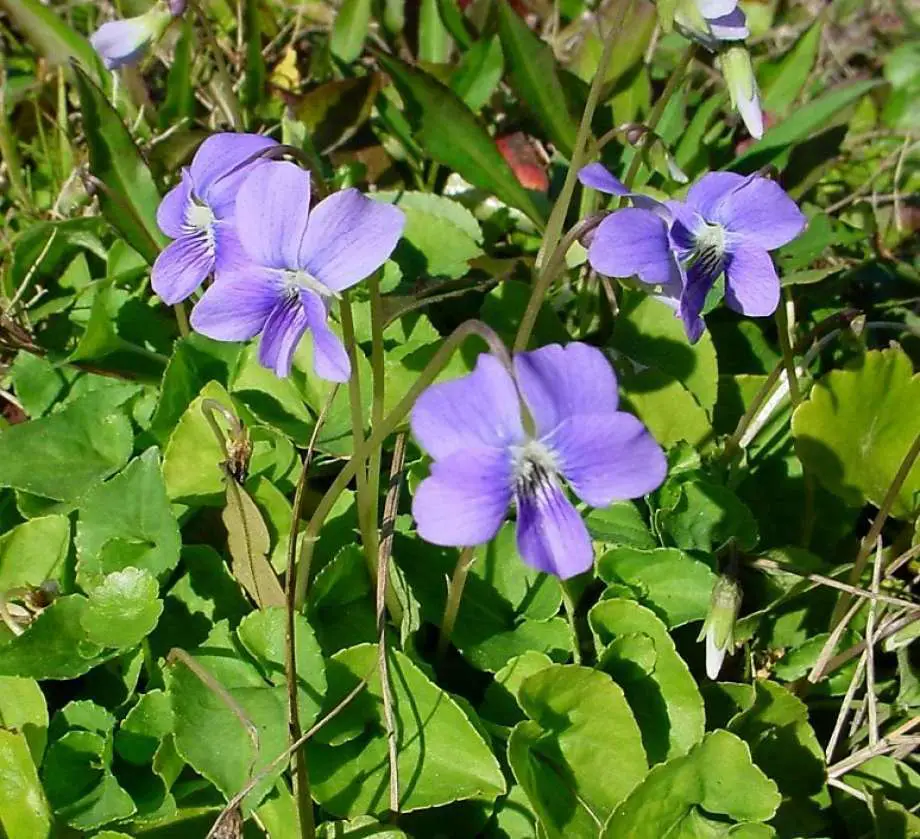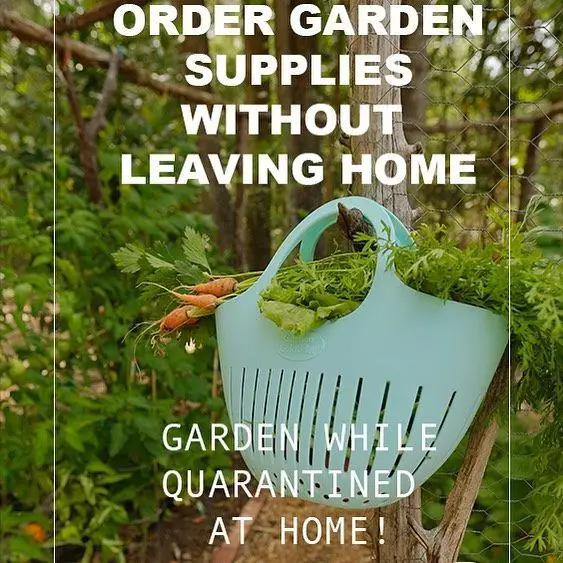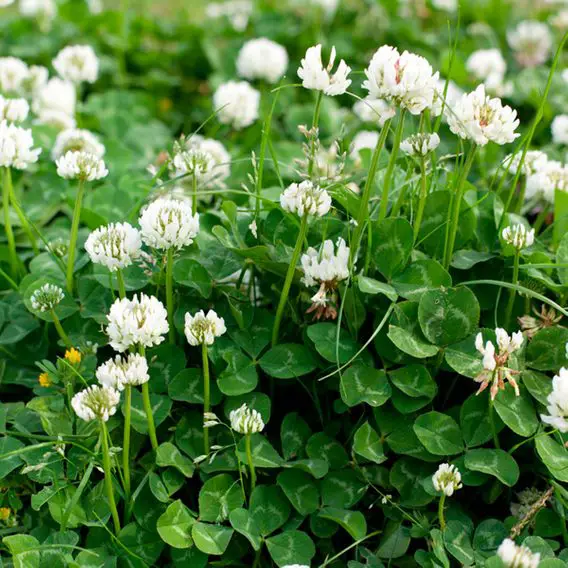How To Get Rid Of Wild Violets In Flower Beds
If wild violets are in your flower beds and not in your lawn, there are cheaper options to control wild violets. T-Zone is a selective herbicide which means that it will not hurt your lawn. However, if the wild violets are in your garden instead, a cheaper non-selective herbicide can be used. Since wild violets are tough weeds to kill and have waxy leaves, a non-selective brush killer is recommended. Roundup Poison Ivy Plus Tough Brush Killer does an excellent job on tough to kill weeds like wild violets. Be careful when you use roundup to kill wild violets because the round-up will kill everything you spray it on!
Can Voles Transmit Diseases To People
Voles have been known to carry a variety of diseases like rabies, Hantavirus, and Korean hemorrhagic fever. This makes it especially important to keep a safe distance from them in your yard. Even their feces and urine can carry viruses, so be sure to wear closed-toe shoes and gloves if youre working near their runways.
Recommended Reading: How To Control Wild Violets
How To Kill Wild Violet
Find out how to banish this pesky weed from your lawn.
Wild violet is a perennial weed found in many northern regions of the U.S. It flowers in early spring and is usually found in the shady, damp areas in your yard.
Killing wild violets in your lawn can be a difficult challenge, but we can help. One thing to keep in mind: Wild violets are best controlled in the fall as they are preparing to go into winter.
Also Check: How To Replace Lawn With Ground Cover
Create An Environment That Is Best For Your Lawn
Take a soil test for your lawn and add the necessary treatments to correct soil pH and other deficiencies. Youll often find violets growing in soil with very low soil pH, which grass doesnt do so hot in. After you get a good handle on the violet populations, core aerate your lawn. This will relieve soil compaction and improve drainage which your grass plants will prefer.
Managing Creeping Charlie And Violets

Ground ivy often creates a thick mat of vegetation in shade lawn areas.
Lawns in shade areas are rarely very vigorous or dense and thus may be prone to weed invasion. Two of the more common broadleaf weeds invading shady lawns are ground ivy and violets. Both are difficult to control.
Ground ivy , also called creeping Charlie, is a common lawn weed problem. Shady lawns with poorly drained fertile soil are typical sites for ground ivy to develop into a major problem. This plant may form extensive patches as it creeps along the soil and moves into sunny areas. The stems are square and the leaves are arranged opposite of each other along stems. The leaves are round to somewhat kidney shaped with rounded, toothed margins. Crushed leaves have a minty odor. Ground ivy has small funnel-shaped purplish-blue flowers appearing from April to June.
Ground ivy will produce new plants at the nodes of trailing stems.
Violets include several cool-season annuals and perennials that are low-growing plants. These species are very shade tolerant and prefer lawns located on moist, fertile soils. Violets tend to be most visible during cool weather of spring and fall. Leaves of the common violet are oval to kidney-shaped with a heart-shaped base. Flowers may be white, blue, purple, or yellow. All violets reproduce by seed, and perennial violets also spread by creeping roots and rhizomes.
To keep ground ivy and violets from invading lawns, maintain a thick lawn by proper lawn care practices.
Recommended Reading: How To Feed Your Lawn
How To Control Wild Violets In Kentucky Lawns
Theres an old saying that goes where theres one mouse, theres more. Unfortunately, the same could be said of wild violets in lawns. If youve spotted one violet, chances are theres an underground root system spreading like wildfire. While it technically isnt an invasive species, because its native to North America, it is incredibly invasive when it comes to lawns. They take root quickly and are difficult to eradicate but not impossible. Today, well discuss this perturbing plant and what you can do about it.
Read Also: How To Keep Lawn Green In Summer Heat
Horticultural Vinegar Control For Wild Violets
Related Articles
The wild violet is an invasive plant that is winter-hardy in U.S. Department of Agriculture plant hardiness zones 3 through 9. Once established, wild violets can tolerate drought-like conditions due to their fleshy underground rhizomes, which store water and allow the plant to spread. With their pretty flowers and zealous growth, they make attractive ground covers but can swiftly get out of control, overtaking a landscape. Their extensive root systems allow these aggressive plants to form colonies, making wild violets difficult to control. A homemade weed killer containing horticultural vinegar can control wild violets without expensive commercially prepared herbicides.
You May Like: Does Home Depot Have Lawn Chairs
How To Get Rid Of Wild Violet Weeds In Your Maryland Lawn
If you have wild violets in your Maryland lawn, youre likely getting more and more frustrated each year as you notice them slowly taking over.
These weeds sure are persistent. And if you think youre trying everything humanly possible to get rid of them, and you feel like youre failing, youre not alone. Wild violets in grass are probably one of the worst weeds to control. Whats more is that traditional weed control methods dont work on wild violets. Lets discuss this pesky weed more in detail and talk about ways you can combat it in your Maryland lawn.
How To Prevent Wild Violets From Coming Back
Many homeowners let a limited number of wild violets coexist with their turfgrass because the flowers are an important source of nectar when little else is in bloom. But once youve stopped a full-blown invasion, heres how you can keep these plants in check.
-
Lawn care best practices: Start with a healthy, well-maintained lawn and planting beds. Dense grass and foliage make it difficult for seeds to establish and roots to spread, Shipman says.
-
Mulching: Within a day or two after hand weeding, apply a thick layer of mulch to the area you weeded to suffocate any small bits of plant or root system left in the soil.
-
Pruning: Wild violets do best in light shade where turfgrass struggles to thrive. Trim trees and overgrown shrubs to allow more sunlight to hit patches of the lawn where the flowers are proliferating.
-
Drainage: Moist soil is where wild violets thrive, so improving the drainage of your garden or lawn will prevent these plants from taking up residence. Aerate your soil or mix in coarse organic material like sawdust, sand or gypsum.
Don’t Miss: How Much Is My Lawn Mower Worth
Why Are There So Many Violets In My Yard
Violets establish well in shady, moist areas where turf is not vigorous and cannot out-compete violets and other weeds. … Violets can also be a sign of thinning lawns overall, and can establish where lawns are mowed too short , competing with that lawns’ chances of growing thick and vigorous once more.
How To Kill Wild Violets And Discourage Them From Coming Back
- Kill wild violets and other pesky lawn weeds with fast-acting Ortho® WeedClear Lawn Weed Killer Ready-to-Use. It’s rainproof in just an hour and won’t harm the surrounding lawn, plus the Comfort Wand makes it extra comfortable to use.
- To kill a widespread infestation of wild violet, go with Ortho® Weedclear Lawn Weed Killer Ready-To-Spray. A single bottle treats up to 5,000 square feet and the convenient hose attachment makes application as easy as watering your lawn.
- Regular feedings for your lawn provide the nutrients your grass needs to grow thick and strong and help crowd out weeds like wild violet.
- Mowing at a height best for your lawn allows the grass to grow thick and develop a deep root system. Grass clippings recycle plant nutrients back into the soil, so leave them where they fall if you use a mulching mower.
- Your lawn will begin to wilt when water is needed. As much as possible, take advantage of nature’s sprinkler and rely on the rain to water your lawn. If you do use sprinklers, set them to water your lawn deeply and infrequently. Most lawns only need an inch of water per week.
Also Check: How To Get New Lawn Care Customers
How Do I Get Rid Of Small Purple Flowers In My Lawn
The Best Way to Kill Purple Weeds
. Also, what are the tiny purple flowers in my lawn?
One of the most difficult weeds to control in the lawn is wild violet. This native plant may look cute and dainty, especially in the spring when it produces pretty purple flowers. But in reality it is an aggressive weed with an unusual flowering quirk that results in thick mats of leaves that can choke out your lawn.
Additionally, how do you kill violets naturally? Creating a homemade weed killer to control wild violets requires mixing horticulture vinegar with water. You can use a ratio of 80 percent water and 20 percent vinegar. This homemade wild violet weed herbicide has an 80-percent control rate over most broadleaf weeds when sprayed on the offending plants foliage.
In this regard, will vinegar kill wild violets?
Getting Rid of Wild Violets. Use vinegar on them. It will kill them in a day or two. Put pure vinegar in a bottle that you can control the spray and spray only the violets.
How do I clear my yard full of weeds?
How to Get Rid of a Lawn Full of Weeds
What Are Wild Violets

Wild violets are a close relative to annual violas and pansies, Shipman says. They are a persistent, low-growing, broadleaf perennial that thrives in shady spots with moist soil, and they flower prolifically in the early spring. The plants grow between four and six inches tall, forming thick clumps with flowers that attract many pollinators.
These aggressive plants spread via rhizomes a creeping horizontal root that can produce new shoots or seeds. If you look closely, you can often see small, unopened flowers underneath the foliage, Shipman says. These can self-pollinate and produce seeds, a fascinating adaptation that ensures the next generation of plants, even if the opened flowers havent been pollinated by insects. The botanical term for this is cleistogamy.
Also Check: Who Has The Best Riding Lawn Mower
What Are Wild Violets And How Do I Control Them
While wild violets may sound like delightful plants and their deep purple blooms are pretty theyre actually an aggressive weed that will happily invade your lawn if left unchecked. Typically found in northern regions of the U.S., wild violets flower in the spring and prefer the damp, shady parts of your yard. Whats more, these are perennial weeds, meaning they will come back to haunt you year after year. But dont despair. Weve got wild violet control tips that can help you conquer this invader.
What Kills Violets But Not Grass
You can use several herbicides to kill violets, and they wont harm your grass lawn. You can use broadleaf killers like Dicamba and 2.4D to selectively destroy the flowers while not killing the grass lawn.
Drive is another suitable herbicide you can use on violet flowers.
See also: What will kill weeds but not Bermuda?
Read Also: How To Use Sevin Insect Killer Lawn Granules
How To Kill African Violets In Your Lawn
The autumn is the ideal season for controlling wild violets. The weed is a perennial with a protracted tap root. Use a broadleaf killer that contains 2,4-D or Dicamba to destroy the violets only the grass wont be harmed. Drive is a fantastic wild violet herbicide . Quinclorac is marketed under many names in other lawn weed control solutions.
Because the leaf surfaces of violets are so waxy, adding a spreader-sticker product to the herbicide mixture will improve the herbicides adhesion to the leaf surfaces and increase control. Visit your neighborhood garden center and request a spreader-sticker product.
One treatment is insufficient. Multiple treatments will be required. Applications used in the spring or summer merely burn back the leaf tissue the plants will eventually regrow. Herbicides used in the fall have better effectiveness controlling plants because they move down into the tap root.
Why Is Controlling Wild Violets So Difficult
Wild violets are cool season perennials that grow best in shady, moist soil. There are three problems with these tough little plants that make killing wild violets so difficult. Wild violets have two types of flowers the pretty purple ones that children gather for their mothers and the plain, unopened ones that shelter beneath leaves that protect them from most types of wild violet control. The purple flowers may be sterile. The flowers beneath the leaves are not only fertile, but self-fertilizing. They dont need to bloom to reproduce.
Thick clumps of underground stems, called rhizomes, store water so the plants can survive drought. When a gardener tries to kill wild violets in the lawn, the rhizomes survive and send forth new shoots.
Those lovely heart-shaped leaves pose the third problem in controlling wild violets. The waxy coating that gives the leaves their shine also prevents herbicides from penetrating the leaves.
Also Check: What Is The Top Rated Self Propelled Lawn Mower
Don’t Miss: Where To Dispose Of Lawn Mower
How Do I Get Rid Of Wildflowers In My Lawn
Remove any existing vegetation that is present. You can also apply an herbicide to kill grass and other plants if the area is in lawn. If the area is in lawn, you can remove the sod by hand or with a rented machine. The removal or killing of plants that would otherwise compete with the germinating wildflower seeds for light, water, and nutrients is essential.
A Proactive Lawn Care Program
Weeds like wild violet and Creeping Charlie are always hard at their sinister work, even when you cant see them.
Thats why you need a complete, proactive lawn care program that includes both weed preventative and curative treatments from early spring to late fall to battle weeds like wild violet or Creeping Charlie.
Recommended Reading: How To Keep Your Lawn Green In The Summer
Controlling Wild Violet Weeds In The Lawn
One of the most difficult weeds to control in the lawn is wild violet. This native plant may look cute and dainty, especially in the spring when it produces pretty purple flowers. But in reality it is an aggressive weed with an unusual flowering quirk that results in thick mats of leaves that can choke out your lawn.
Wild violets are very tough plants that tolerate drought. But the ideal condition for them is moist soil, which this years above average rainfall has provided. This has resulted in vigorous growth and spreading of this weed.
In spring, wild violets produce their well-known purple flowers, which are often mowed off. But in summer violets can produce a different type of self-pollinating flower that stays below the leaves and produces seeds that are dropped in the surrounding area. These flowers will not be mowed off, allowing for a large amount of seeds to be spread. They also spread by underground stems. Using these two methods, they can eventually create dense colonies.
Wild violets can be controlled, but it does take some effort and repeat treatment. Fall is the ideal time to control wild violets as they will more readily move herbicides into the root system as they prepare for winter.
Selective broadleaf weed herbicides must list wild violet on the label to be effective. Bonide Chickweed Clover& Oxalis Killer is an option, or a product containing dicamba and triclopyr, but again it may take several applications to completely eradicate established plants.
What Are Native Wild Violets

Wild violet is an annual weed-like flower found in the northern parts of the united states. It blossoms in spring, and you will start to see them in the cool, humid areas of your lawn.
Dealing with native violets on your lawn can be one of the most traumatic tasks any lawn owner can ever encounter.
These pretty flowers will take over your lawn in a matter of seasons, and once in control, nothing is more tenacious than the violet flower. Eliminating wild violets in your lawn can take years so be sure to have a long-term strategy!
Are you in such a situation? You have done everything, but no matter what you do, they keep coming back? And you are left wondering, is there any form of treatment that one can use to kill these invasive flowers?
Not a very good scenario to find yourself in! Dont worry, there are a couple of things you can use to kill violets on your lawn. The next few paragraphs will have some insightful information on how to deal with these pesky flowers!
Also Check: How Much Does Mowing The Lawn Cost
How Do You Get Rid Of Wild Violets In Lawn
If wild violets have invaded your lawn, use a postemergence broadleaf herbicide. These herbicides will kill the violets, but they will not harm your turf. UMass Extension recommends using a herbicides that combine phenoxy and benzoic acid , such as Sword or Dyclear.
What will kill African violets?
The fastest way to kill African Violets is to overwater them. For this reason, watering them on a fixed schedule, such as every Saturday, is a bad idea. Instead, feel the soil around your plants, and water if the top is dry.
How do you control violets in lawn?
The most effective way to control violets in lawns is chemicals. Pulling violets out of turf is almost useless and certainly, you cant mulch a lawn. Most lawns that use a lawn service dont have violets.